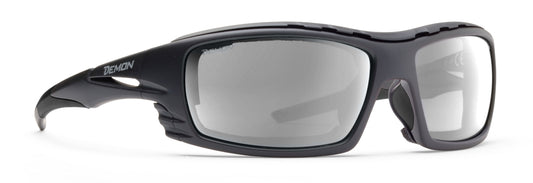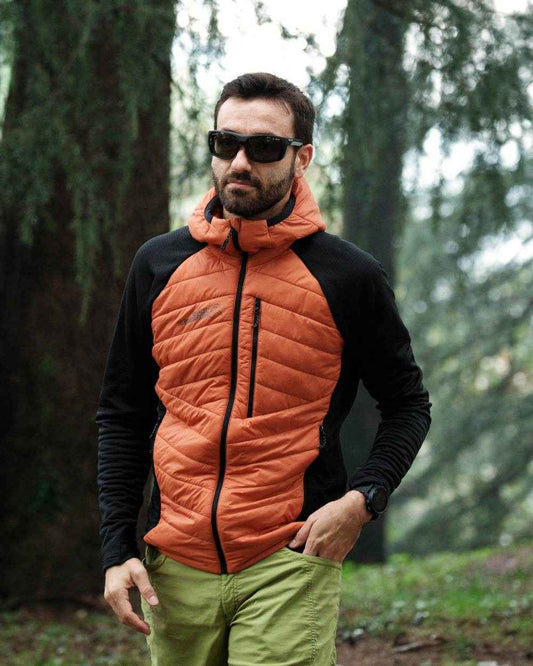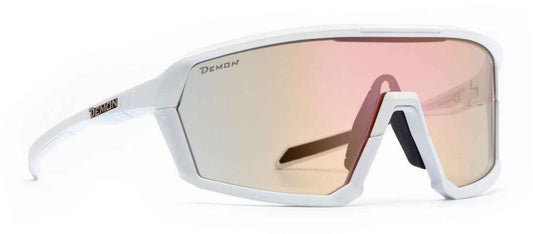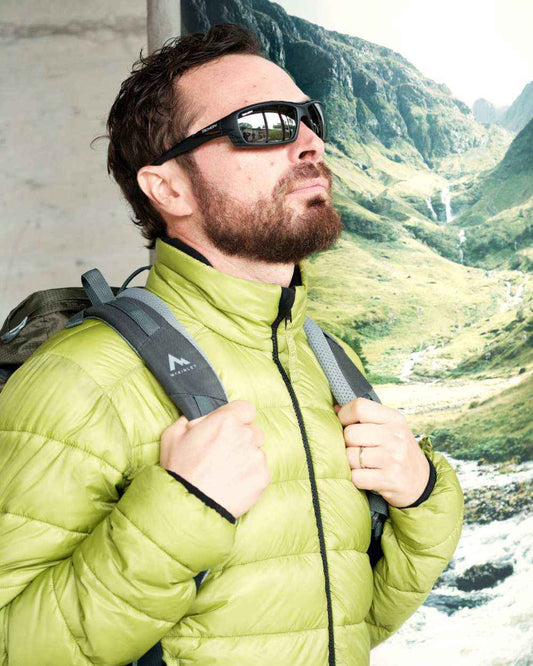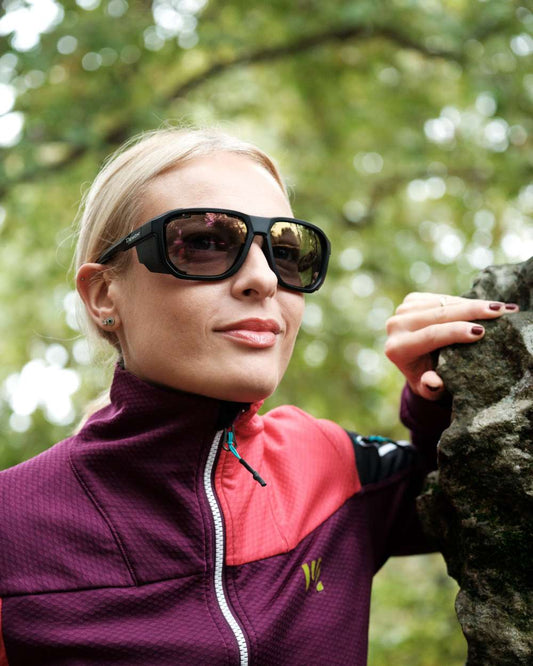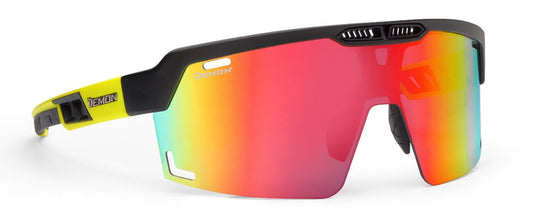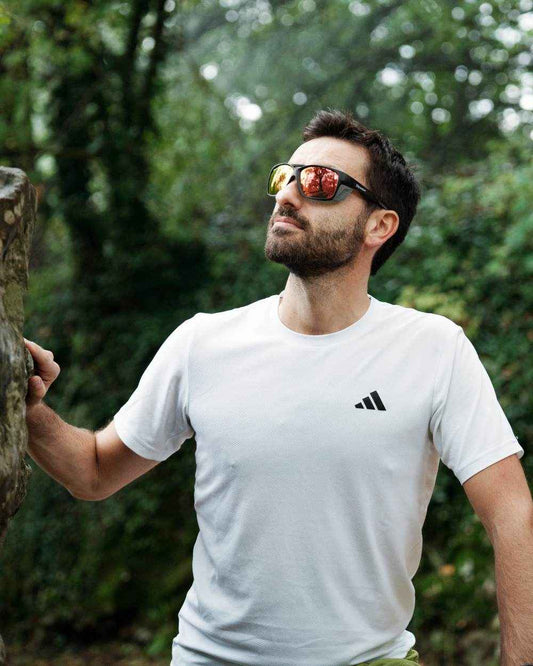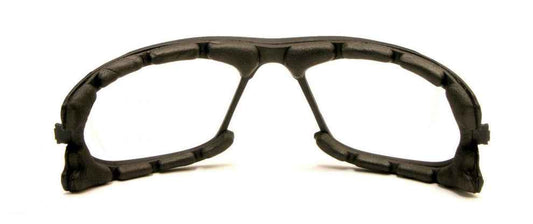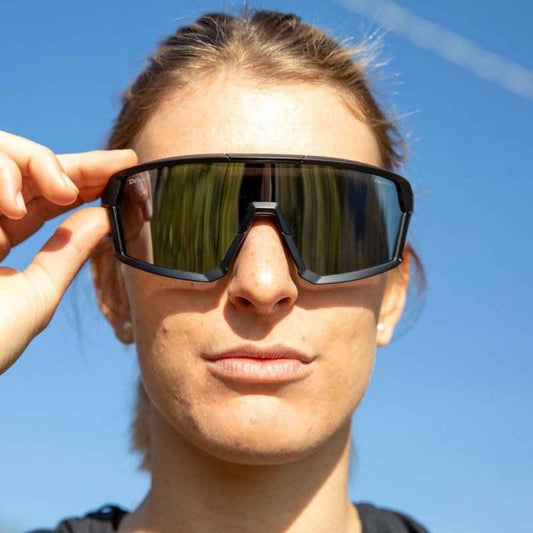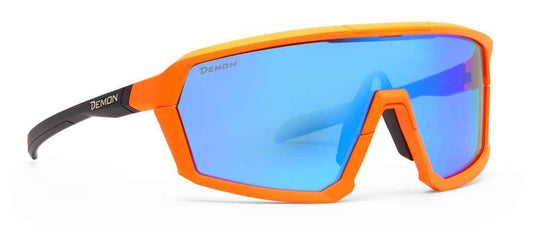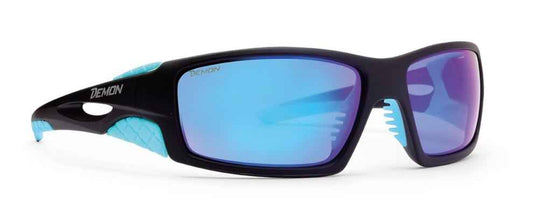-

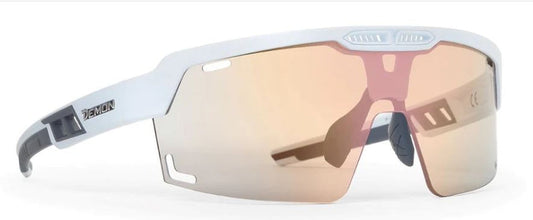 Sale
SaleSPEED VENT
Vendor:Mountain Glasses with Photochromic Mirrored Lens DCHROM® Cat. 1-3Regular price From €116,91Regular priceUnit price / per€129,90Sale price From €116,91Sale -
SPEED VENT
Vendor:Mountain Glasses with High Contrast Mirrored LensRegular price €69,90Regular priceUnit price / per
Collection: Ski Glasses
Ski Glasses – Choosing the Right Sunglasses for the Winter Season
Selecting the ideal ski glasses is essential for enjoying a safe and comfortable winter season on the slopes. The right pair not only protects your eyes from harsh sunlight, wind, and snow glare but also ensures visual clarity, comfort, and performance during skiing, snowboarding, or mountaineering. To make an informed choice, several important factors should be considered:
Material and Durability:
High-quality ski glasses are constructed from ultra-light, flexible materials that resist deformation in low temperatures and provide impact resistance in case of falls or collisions. Lenses should be shatterproof, scratch-resistant, and UV-protective, ensuring maximum eye safety while maintaining clear vision.
Lens Type and Atmospheric Conditions:
Ski glasses come with different lenses tailored for specific light and weather conditions. Options include:
- Transparent lenses for low-light or foggy conditions.
- Orange or yellow lenses for variable light and moderate brightness.
- Smoke or mirrored lenses for intense sunlight.
- Photochromic or polarized lenses that adapt automatically to changing light, reduce glare, and enhance contrast. Choosing the right lens ensures optimal visibility on all slopes and in all weather.
Shape, Size, and Fit:
Proper ergonomics are crucial for comfort and safety. Ski glasses should fit securely to the face while providing enough room for prescription lenses if needed (OTG-compatible models). Features like adjustable side arms, rubberized nose pads, and flexible frames help achieve a snug, stable fit, even under a helmet or during vigorous activity.
Weight and Comfort:
Lightweight frames reduce fatigue during long hours on the mountain. Soft, padded nose bridges and temple tips ensure a comfortable fit, prevent pressure points, and maintain stability even during rapid movements or jumps.
Additional Features:
Modern ski glasses often include anti-fog and anti-scratch coatings, ventilation channels, and interchangeable lenses for varying light conditions. Some models also allow clip-on prescription lenses, giving those with vision correction the benefits of both safety and comfort.

DEMON Ski Glasses Buying Guide – Choose the Perfect Pair for Every Condition
At DEMON, we know that selecting the right ski or snowboard sunglasses can be the difference between a comfortable, safe ride and a challenging day on the slopes. To help athletes make informed choices, we’ve created a comprehensive guide covering every essential aspect of ski glasses selection.
Frame Design and Durability:
The structure of ski glasses is crucial for comfort, stability, and long-term durability. High-quality frames are lightweight, flexible, and resistant to low temperatures, ensuring they maintain shape and performance in all conditions. Some models feature adjustable side arms and rubberized nose pads for a secure fit under helmets or headgear.
Lens Type and Technology:
DEMON’s guide explains the benefits of various lens options for ski glasses, including transparent, orange, smoke, polarized, and photochromic lenses. Each lens is tailored for specific lighting and weather conditions, providing optimal visibility, glare reduction, and UV protection, whether skiing under bright sun, cloudy skies, or snowy conditions.
Atmospheric Condition Suitability:
Ski glasses need to perform in a variety of environments. The guide details which lenses work best in bright sunlight, low light, snowstorms, or reflective snow surfaces, allowing athletes to maintain clear vision and comfort throughout the day.
Dimensions and Fit:
A proper fit is critical for both comfort and stability. DEMON outlines how to choose ski glasses that align with your face shape and size, providing a secure fit that prevents slipping, wind, or snow intrusion while remaining comfortable under helmets or other headgear.
Compatibility with Prescription Lenses:
For athletes who wear corrective lenses, DEMON offers solutions such as OTG-compatible ski glasses and universal clip-on optical inserts, enabling the use of prescription lenses while still benefiting from polarized or photochromic sunglasses.
Discipline-Specific Recommendations:
Different activities, from downhill skiing to ski mountaineering and snowboarding, have unique requirements. The guide highlights which ski glasses are most suitable for each discipline, taking into account speed, terrain, and typical weather conditions, ensuring you have the right eyewear for your sport.
Ski Glasses with Temples – A Technical Alternative for Mountain Sports
When thinking about ski eyewear, most people imagine traditional wrap-around ski goggles. However, another high-performance option exists: technical wrap-around ski glasses with temples. These are specifically engineered for skiing, snowboarding, and ski mountaineering, offering protection and performance that ordinary sunglasses cannot provide.
Why Ordinary Sunglasses Are Not Enough:
Everyday sunglasses are not designed for high-altitude winter sports:
- Limited UV protection: Intense sunlight at high altitudes, combined with reflection off snow, can cause eye strain, redness, or tearing.
- Low impact resistance: Ordinary lenses may shatter upon accidental collisions, falls, or contact with snow and ice, posing a safety risk.
Advantages of Ski Glasses with Temples:
Ski glasses with temples belong to the mountain sports eyewear family, offering features optimized for all conditions, including on-piste, off-piste, and ski mountaineering:
- Sweat-absorbing nose and temple pads for comfort during intense activity.
- Ventilated side panels to reduce fogging and adapt to changing conditions.
- Adjustable temple arms and flexible frames to ensure a secure fit under helmets or hats during dynamic movements.
Comfort and Versatility:
Ski glasses with temples combine the convenience of sunglasses with high-performance mountain protection. They are ideal for:
- Helmet use, fitting comfortably without pressure or slippage.
- Mild winter days, providing sun protection and comfort during breaks or in less severe conditions.
- Ski mountaineering, shielding eyes from sun, wind, and snow while ascending or traversing exposed terrain.
Protection and Performance:
With impact-resistant lenses and frames engineered for extreme conditions, ski glasses with temples provide:
- Superior UV protection to reduce eye strain and long-term damage.
- Enhanced clarity and contrast, allowing skiers and snowboarders to see bumps, ridges, and terrain variations clearly.
- Durable, lightweight frames that maintain shape and comfort in low temperatures and during high-intensity activities.

Types of Lenses for Ski Glasses
Understanding the different types of lenses available for ski glasses is essential for selecting the best option for your needs. Each lens type offers unique advantages and limitations depending on light conditions, weather, and activity type. Choosing the right lens ensures optimal visibility, eye protection, and performance on the slopes.
Polarized Photochromic Lenses (Category 2–4)
The Category 2–4 Polarized Photochromic lens is one of the most advanced options for ski glasses, especially in the DEMON collection. This lens combines photochromic technology with polarization, offering a versatile solution for all mountain conditions.
How Photochromic Lenses Work:
Photochromic lenses react to UV radiation and sunlight. They begin with a base smoke tint and gradually darken as light intensity increases, reaching Category 4 under bright sunlight. When light diminishes, the lenses return to a lighter, more transparent state, providing consistent, optimal vision throughout the day. This makes them ideal for slopes with shaded trails, open sunny areas, or rapidly changing weather conditions.
Benefits of Polarization:
Polarized lenses filter horizontal light reflections and control scattered rays. They reduce glare from snow and ice, attenuate UV-A and UV-B radiation, and enhance visual contrast, allowing skiers and snowboarders to clearly see bumps, ridges, and terrain features, even in bright sunlight or highly reflective snow conditions.
Versatility Across Disciplines and Conditions:
Ski glasses equipped with polarized photochromic lenses are suitable for all mountain activities:
- Downhill Skiing: Provides clarity and contrast at high speeds on open slopes or in mixed light conditions.
- Ski Mountaineering: Offers adaptive light adjustment and protection during climbs, descents, and long exposure at varying altitudes.
- Off-Piste Adventures: Enhances safety by revealing terrain variations and obstacles in unpredictable environments.

Photochromic Lenses (Category 2–4)
The Category 2–4 Photochromic lens is the non-polarized counterpart to the Polarized Photochromic 2–4 lens. Like its polarized version, it provides excellent UV protection and automatically adjusts its darkness according to the intensity of sunlight. However, it lacks the polarizing filter, which gives it unique advantages in certain situations.
Performance Considerations:
Some might wonder if the absence of polarization reduces its effectiveness. The answer is no. In fact, this lens offers distinct benefits that make it especially valuable for ski mountaineers and athletes relying on electronic displays.
Advantages of Non-Polarized Photochromic Lenses:
A key advantage is that they do not interfere with LED or GPS displays, heart rate monitors, or action cameras. Polarized lenses can create a “rainbow effect” on digital screens, making readings difficult or inaccurate. By avoiding polarization, these lenses allow athletes to monitor their devices without removing their sunglasses, ensuring uninterrupted focus and safety during training or long climbs.
Versatility Across Ski Disciplines:
The Category 2–4 Photochromic lens is suitable for a wide range of snow sports:
- Downhill Skiing: Provides excellent UV protection, clear vision, and dynamic adaptation to changing light on open slopes.
- Off-Piste Skiing: Enhances contrast and terrain perception in variable conditions, improving safety on unpredictable terrain.
- Ski Mountaineering: Particularly advantageous, as it allows for monitoring electronic devices and navigating safely in rapidly changing mountain environments.

Category 4 Lenses
Category 4 lenses are highly specialized lenses designed for extreme light conditions often encountered in high-altitude mountain environments. They are particularly recommended for activities such as mountaineering, ski mountaineering, and glacier skiing, where intense sunlight and snow reflection can be overwhelming for the eyes.
Why Category 4 Lenses Are Needed:
At high altitudes, the combination of direct sunlight and reflective snow or ice greatly increases light intensity, which can cause eye strain, fatigue, and discomfort. The monochromatic white of glaciers and snowfields can be especially blinding, making standard lenses inadequate. Category 4 lenses reduce brightness significantly, allowing athletes to see clearly without squinting and to protect their eyes from potential damage.
Who Benefits Most:
These lenses are ideal for individuals who are sensitive to bright light, as they provide maximum glare reduction and UV protection. Skiers and snowboarders venturing onto glaciers or engaging in high-altitude mountaineering will find these lenses essential for comfort and safety.
Versatility:
While primarily designed for extreme brightness, Category 4 lenses can also be used for downhill skiing by anyone who finds bright sunlight challenging. They offer superior eye protection and visual comfort, allowing athletes to maintain focus and performance even under the harshest sunlit conditions.

Polarized Lenses
Polarized lenses, often referred to as DPOL lenses, are designed to provide superior eye protection and visual clarity in snowy and high-altitude environments. Beyond standard UV protection, these lenses use a special polarizing filter to manage light rays, reducing glare and enhancing overall vision quality.
How Polarized Lenses Work:
The polarizing filter concentrates or disperses light rays, effectively attenuating UV-A and UV-B radiation while eliminating horizontal reflections from surfaces like snow, ice, and wet terrain. This ensures that your eyes are protected from both direct sunlight and the intense glare caused by reflective surfaces, which can be particularly harsh in mountain environments.
Advantages Over Standard Lenses:
Ski glasses or goggles with polarized lenses provide several benefits compared to traditional smoke or colored lenses:
- Improved contrast perception, making it easier to detect bumps, ripples, and terrain variations.
- Sharper vision, allowing athletes to react more quickly to obstacles and changes in slope conditions.
- Preservation of natural colors, maintaining a realistic and comfortable view of the surrounding landscape.
- Elimination of horizontal reflections, which reduces eye strain and fatigue during prolonged use.
Ideal Use Cases:
Polarized lenses are particularly suitable for:
- Downhill skiing: Enhances clarity and contrast on bright slopes.
- Off-piste skiing: Helps identify terrain changes and obstacles in variable light conditions.
- Glacier skiing: Reduces intense glare from ice and snow for prolonged comfort.
Limitations:
While polarized lenses are excellent for most skiing disciplines, Category 3 polarized lenses are not recommended for ski mountaineering at high altitudes. In such extreme environments, where sunlight intensity is stronger and UV exposure is higher, Photochromic 2–4 lenses or Category 4 lenses are better suited to protect the eyes effectively.

Smoke Mirrored Lenses
For skiers and snowboarders who prefer a straightforward, high-performance lens without the features of photochromic, Category 4, or polarized lenses, smoke mirrored lenses offer an ideal solution. These lenses combine the classic look of everyday sunglasses with advanced technical benefits tailored for mountain environments.
Key Features and Benefits:
- Impact Resistance: Crafted from durable, multi-layer polycarbonate, smoke mirrored lenses can withstand accidental impacts, protecting your eyes from snow, ice, and debris during high-speed descents or falls.
- UV Protection: These lenses provide maximum protection against harmful UV-A and UV-B rays, ensuring eye safety in bright sunlight and on reflective snow surfaces.
- Glare Reduction: The mirrored coating reduces glare from snow and ice, enhancing visual comfort and reducing eye strain during prolonged exposure to bright conditions.
- Versatility and Performance: While simpler than polarized or photochromic lenses, smoke mirrored lenses are versatile enough for a wide range of lighting conditions, offering clear vision and comfort in both bright and moderately lit environments.
Who Should Choose Smoke Mirrored Lenses:
This lens type is perfect for individuals seeking technical performance combined with a familiar sunglasses appearance. It’s ideal for downhill skiing, off-piste adventures, and recreational snowboarding, providing reliable eye protection and a stylish look without the additional features of adaptive or polarized lenses.


Frame Materials
The frames of ski goggles and sports sunglasses are critical for durability, comfort, and safety, especially in the demanding conditions of mountain environments. At DEMON, all goggles and Vista Sport models utilize TR90, a specialized material composed of nylon and carbon fiber, chosen for its superior performance characteristics.
Key Features of TR90 Frames:
- Hypoallergenic: TR90 is gentle on the skin, making it suitable for prolonged wear without causing irritation, even during long days on the slopes.
- Elasticity and Flexibility: One of the standout qualities of TR90 is its exceptional elasticity. This allows the frame to bend under pressure without breaking, accommodating impacts and mechanical stress such as during lens changes or accidental drops without compromising structural integrity.
- Lightweight Construction: TR90 frames are approximately 20% lighter than traditional materials, with typical weights ranging from 20 to 45 grams depending on frame thickness. This reduces fatigue during long sessions and enhances overall comfort.
- Impact Resistance: The combination of nylon and carbon fiber provides high resistance to accidental impacts, protecting both the frame and the lenses while ensuring safety for the wearer.
Enhanced Comfort and Stability:
DEMON frames feature a soft, hypoallergenic Megol grip along the inside of the temples. This grip keeps goggles or glasses securely in place during intense activity, preventing slipping even under vibrations or sudden movements. It also enhances comfort, reducing pressure points on the face during extended use.
Extreme Condition Performance:
TR90 frames excel in high-altitude and extreme environments, remaining stable and resistant to deformation across a wide range of temperatures. Whether exposed to freezing cold or intense sunlight, the frames maintain their shape, strength, and comfort, ensuring reliable performance in the most challenging mountain conditions.

Ski Glasses for Prescription Lenses
For skiers and snowboarders who require vision correction, there are several options designed to ensure clear vision, comfort, and safety on the slopes. Ski glasses and goggles can accommodate prescription lenses while maintaining compatibility with helmets and other mountain sports gear.
Options for Corrective Vision:
- Ski Glasses with Temples: These technical wrap-around glasses combine the protection of ski goggles with the familiar comfort of sunglasses. They can be worn comfortably under helmets and provide stable support during high-speed descents or dynamic movements.
- Ski Goggles with Adjustable Elastic Bands: Traditional ski goggles with elastic straps also accommodate prescription solutions. The straps ensure a secure fit and prevent the goggles from slipping during activity.
Optical Clips and Prescription Inserts:
For both types of eyewear, universal optical clips are available, allowing custom prescription lenses to be inserted directly into the ski glasses or goggles. These clips:
- Provide precise vision correction without the bulk or discomfort of traditional eyeglass temples.
- Maintain full compatibility with helmets, elastic straps, and ski goggles’ fit.
- Ensure optimal safety and comfort, allowing athletes to focus on skiing or snowboarding without visual limitations.
Additional Benefits:
By integrating prescription lenses into ski glasses or goggles, skiers can enjoy:
- Enhanced clarity for spotting bumps, ridges, and snow conditions.
- Reliable eye protection against UV rays, wind, and snow.
- Seamless performance in all weather conditions, whether on-piste, off-piste, or during ski mountaineering.

Prescription Compatibility of Ski Glasses
Each ski glasses or goggles model clearly indicates the range of supported corrective powers, making it easier for athletes with vision needs to choose the right eyewear. It is essential to determine which models are compatible with progressive prescription lenses, especially for users who require varying corrective strengths for near and far vision.
DEMON offers a selection of top-performing optical models specifically designed for skiing and snowboarding, combining vision correction with full mountain protection. These models accommodate standard single-vision prescriptions as well as progressive lenses, allowing users to maintain clear vision at all distances while enjoying the slopes.
By selecting a compatible model, athletes can benefit from:
- Enhanced clarity for downhill skiing, off-piste adventures, and ski mountaineering.
- Seamless integration of prescription lenses without sacrificing helmet compatibility or goggle stability.
- Maximum comfort with adjustable straps, ergonomic frames, and hypoallergenic padding, even during long days on the mountain.
Below is a list of the most popular DEMON optical models suitable for skiing, highlighting their compatibility with different types of prescription lenses, including progressive lenses.

VISTA SPORT Ski Goggles – High-Performance Optical Solution
Another highly effective and technically advanced option for skiers and snowboarders seeking prescription compatibility is the VISTA SPORT model. This innovative system is designed to integrate corrective lenses directly within the main lens, providing sharp vision without compromising the natural field of view. By incorporating the prescription into the lens itself, the VISTA SPORT model significantly enhances peripheral vision, allowing athletes to perceive the entire slope with greater clarity and safety.
Key Features and Advantages:
- Integrated Prescription Lenses: Unlike standard OTG (Over-The-Glasses) systems, the corrective lens is embedded within the main goggle lens. This reduces bulk and maintains a clean, streamlined design, ensuring optimal comfort and performance.
- Flattened Lens Design: The lens is carefully flattened using a special eyepiece support, preserving the wrap-around structure typical of sports goggles. This design avoids the distortions and visual anomalies that can occur with highly curved lenses, which are often more expensive to produce and can negatively affect peripheral vision.
- Enhanced Visual Accuracy: By minimizing lens curvature while integrating prescription correction, the VISTA SPORT goggles allow for crisp, undistorted vision across the entire lens surface—essential for detecting bumps, ridges, or obstacles on both piste and off-piste terrain.
- Comfort and Ergonomics: Despite the advanced optical integration, the VISTA SPORT maintains the lightweight, elastic frame and adjustable strap system found in high-end DEMON goggles, ensuring a secure fit under helmets and consistent comfort throughout long days on the mountain.


Helmet Compatibility for Ski Goggles
When selecting ski or snowboard goggles, compatibility with helmets is a critical consideration. A well-fitted goggle not only enhances comfort and stability but also plays a key role in ensuring safety on the slopes. At DEMON, every model of ski goggles is carefully designed and engineered to fit seamlessly with all types of helmets on the market.
Key Aspects of Helmet Compatibility:
- Integrated Design from the Start: Helmet compatibility is not an afterthought; it is a foundational element in the design process of every goggle. By prioritizing this from the beginning, DEMON ensures that goggles align perfectly with helmet contours, straps, and ventilation systems.
- Enhanced Safety: Properly fitting goggles prevent gaps between the helmet and the frame, reducing the risk of wind, snow, or debris entering and protecting the eyes and face during high-speed descents or off-piste skiing.
- Superior Comfort: Goggles that are compatible with helmets avoid pressure points, pinching, or sliding. Features like adjustable straps, elastic bands with grip inserts, and movable side wings allow for a secure fit without compromising comfort, even during long sessions on the mountain.
- Optimized Performance: A helmet-compatible goggle ensures stable positioning, maintaining a clear line of sight at all times. This stability allows athletes to focus on their performance rather than adjusting or readjusting their eyewear.


